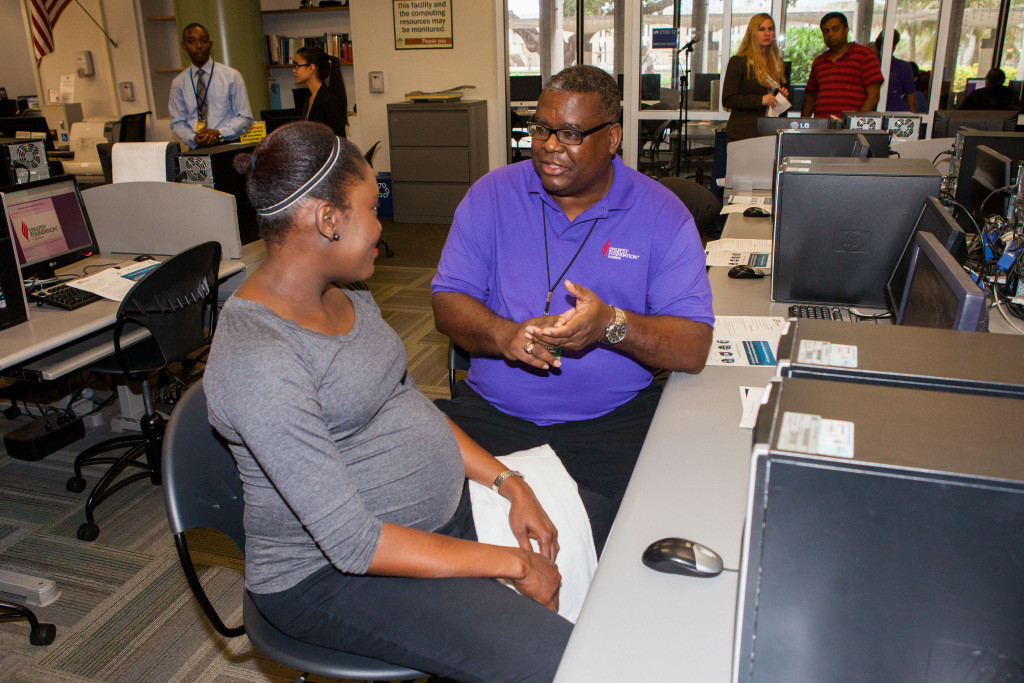MDC Students Without Health Insurance, Target Of National Organization’s Drive To Cover “Young Invincibles”
An estimated 22 percent of Miami-Dade County’s 2.6 million residents are uninsured, making Miami the second most uninsured metro area in the country. Included in that group is Kendall Campus marketing student, Carlos Rojas, 21, who lost his health insurance when he quit his job as a server at Trump International Beach Resort a few weeks ago.
“I feel like whenever you don’t have health insurance you get hurt so hopefully, I can get it again when I get another job,” Rojas said.
Rojas has concerns about the cost of insurance. For that reason he is waiting to find work to pay for the cost of the insurance premium, the amount paid periodically to the insurer by the insured for covering his risk.
But Rojas doesn’t have to wait until he finds another job to find insurance. To address the issue of the many uninsured in the community, Miami Dade College is hosting various Enroll America informational workshops supporting the Get Covered America awareness campaign on the Affordable Care Act to help answer questions and provide assistance regarding Florida’s insurance marketplace.
To kick-off the effort, the U.S. Department of Health and Human Services Secretary, Sylvia Mathews Burwell, spoke to students about the importance of signing up for the Affordable Care Act at Wolfson Campus on Nov. 18.
There is another reason to sign up for a health plan through the Affordable Care Act by the Dec. 15 deadline. The penalty for not having health insurance is increasing. Americans without health coverage in 2016 risk having to pay $695 per person, or more for the year.
Enroll America workshops will be held at Kendall Campus Jan. 9 from 10 a.m. to 1 p.m. in building 2, and Wolfson Campus Jan. 14 from 5 p.m. to 9 p.m in building 2.
Trained volunteers who speak English, Spanish and Haitian Creole will staff tables and the workshops at the College over the next three months to help guide MDC students and the public at large on the application and enrollment process. The effort is focused on connecting the community with the right resources and information to connect people to the right health insurance plans that best fits individual needs and budgets.
The Affordable Care Act expands coverage for the poorest Americans by creating an opportunity for states to provide Medicaid eligibility, which became effective on Jan. 1, 2014. This supports individuals who are under 65 years of age with incomes up to 133 percent of the federal poverty level.
“On average, about 30 percent of the uninsured are eligible for assistance, and we are trying to find the remainder of the people who are uninsured,” said Milton Vazquez, State Communications Director of Enroll America. “We’ve had great success in the last few years at Miami Dade College, almost half of the uninsured are between the age group of 18 to 34 and the African American and Hispanic population.”
This age group is especially targeted because they view themselves as young and invincible, healthy and immune from illness.
The Affordable Care Act aims to provide Americans with better health security by putting in place comprehensive health insurance reforms that expand coverage, hold insurance companies accountable, lower health care costs, guarantee more choice, and enhance the quality of care for all Americans. It prohibits discriminating against anyone with a pre-existing condition, dropping coverage if a person gets sick, billing a person into bankruptcy because of an illness or injury, and limiting annual or lifetime benefits.
The Patient Protection and Affordable Care Act, as well as the Health Care and Education Reconciliation Act of 2010, expanded Medicaid coverage to millions of low-income Americans.
“Young students are a target group because they are a group that don’t always have insurance. If a student gets sick or in an accident, that could not only change their education plans, but their future as well,” said Director of Federal Relations at MDC, Joe Pena. “[The Affordable Care Act] encourages students to purchase insurance and provides them subsidies. It focuses on people getting insured, it provides people with health insurance options.”




